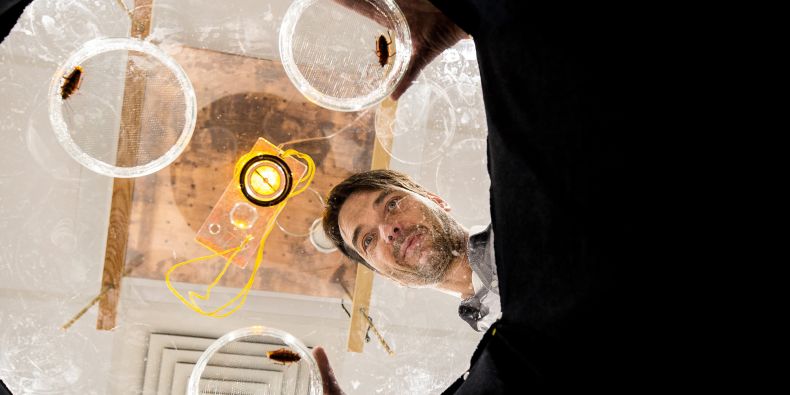The idea that animals navigate using the geomagnetic field first appeared as early as in the 19th century. Research in birds and bees then started in the 20th century. Martin Vácha, a biologist from the Faculty of Science, has recently made a major contribution to our understanding of this phenomenon by proving that cryptochrome, an already known protein found in, among other places, animals’ eyes, serves to detect the geomagnetic field and changes in its direction.
While this had been suspected for some time, the evidence shown by the Brno researchers, who were working in cooperation with their colleagues from České Budějovice, is a breakthrough discovery confirming the role of cryptochrome in magnetoreception. The findings of the project funded by the Czech Science Foundation were published in the Proceedings of the National Academy of Sciences of the United States of America.
As Vácha explains, laboratory research is an indispensable tool for magnetoreception research, because one has to observe the animals outside of their natural environment: “If you want to find out whether an animal has an ‘inner compass’, you first have to remove all the other navigation tools – and animals have a lot of them, whether it’s the sun, sense of smell, the topography of the surrounding landscape, or stars.”
A reliable behavioural test, where animals change their behaviour in response to changes in the geomagnetic field, is crucial for success. “We worked with German and American cockroaches that became increasingly restless when we started rotating their geomagnetic field using a computer-controlled system of large coils,” says Vácha. “After more than six years of work, this system allowed us to beat other international laboratories, because we were able to demonstrate that cryptochrome is essential not only for detecting the existence of the magnetic field, but also for determining its direction.” He explains that they also verified the role and location of the protein by blackening the cockroaches’ eyes and showing that they stopped reacting to the magnetic stimuli. “However, you could argue that they just lost motivation once they were in the dark, so we had to produce more evidence. For example, we blocked the production of cryptochrome in the experimental animals using so-called RNA interference. This also caused a loss of sensitivity to magnetic fields.”
Vácha began his study of animal sensitivity to magnetic fields as a PhD student and also chose cockroaches as his model animals for magnetoreception research early on. He had several reasons for his choice. As he explains, “Years ago, cockroaches were popular with those who studied insect neurophysiology. This is because they are quite resistant to various procedures required for the research, their nervous system has been described in great detail, and they also breed easily.”
In his opinion, sensitivity to magnetic fields may help cockroaches navigate, even if they just use it for distances of several metres. “As soon as they are disturbed or threatened by something, they need to be able to find cover immediately, so every clue helps,” says Vácha. “Even though it may sound strange, we sometimes don’t really know why a given animal has the ability to detect magnetic fields.” He adds that magnetoreception is probably less important compared to the other senses.
However, cryptochrome seems to have other functions as well. It has been found in insect, bird, and mammal cells, including human cells. In humans, it controls biorhythms. Vácha also adds that cryptochrome-based magnetoreception is highly sensitive to radio frequencies of electromagnetic waves, even to very weak ones. As he says, this might be the next broad topic of his research. “Fields created by transmitters or some appliances might have an impact on biological and biochemical processes. This begs the question whether human biorhythms are also sensitive to radio waves and whether this could be used in some way.”
